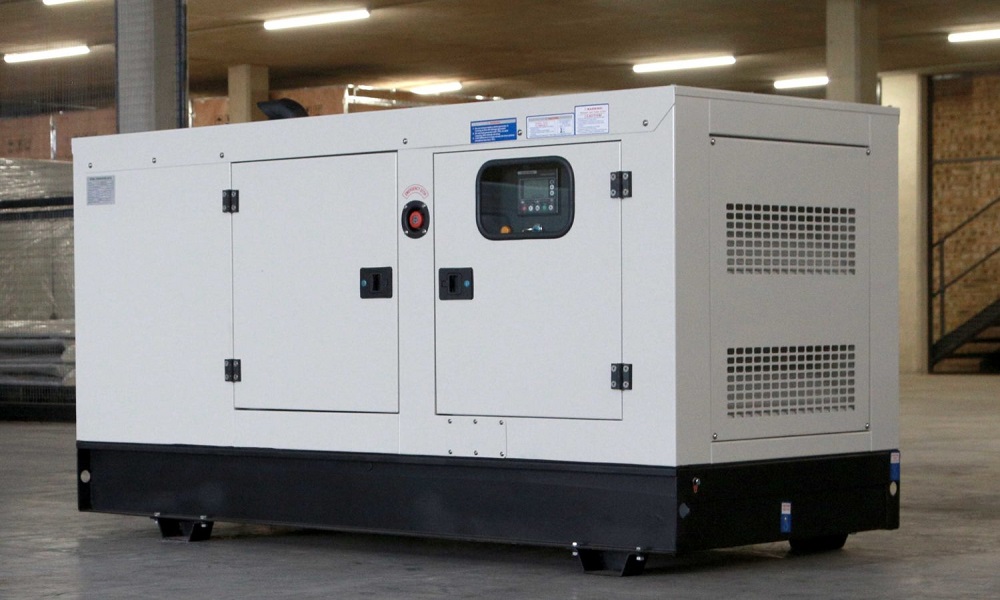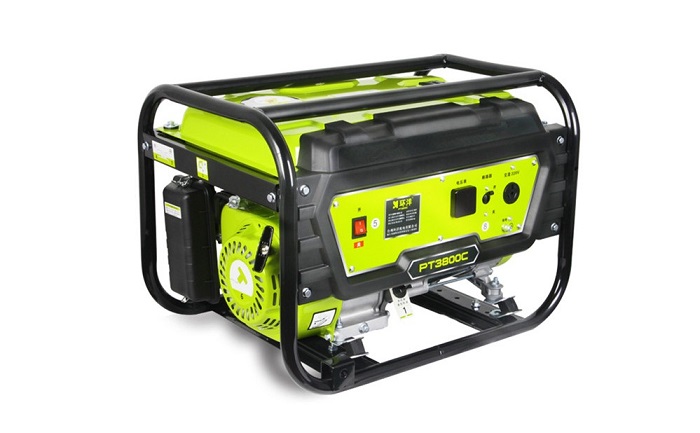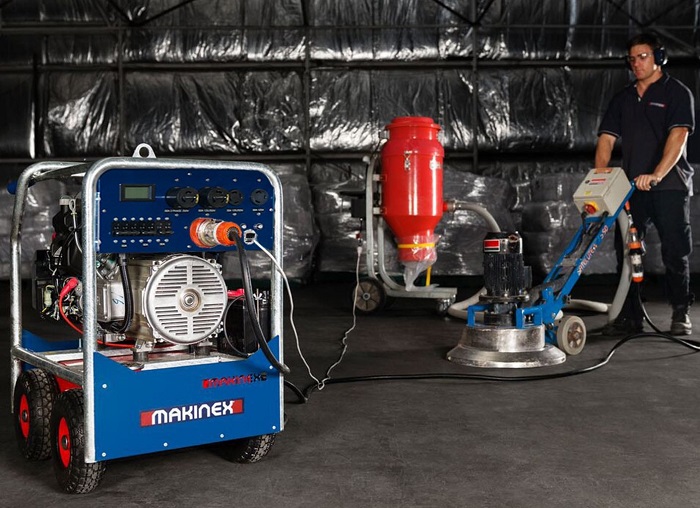As a simple introduction to the generator, it is an appliance converting mechanical energy into electricity. They differ based on the application, the fuel consumption, the amount of power they generate, and the way they function. In this article, we are going to have you initiated into single phase generators’ main parts, instructions, and applications as one of the most commonly used AC generators, and by providing you with its advantages and disadvantages, make it easier for you to decide if you need a single phase or three phase generator for your system. Linquip has gathered and arranged the most related and necessary information in the following so that you can feel at ease and satisfied at the time of your purchase and subsequent use of this product.
Step 1: The Main Parts of an AC Single Phase Alternator
In this section, we are going to discuss the four major different parts of a single phase generator. A single phase alternator consists of four major components: armature, magnetic field (poles), slip rings, and brushes. All of these components are set inside a protecting cover called a yoke which we see as the body of a single phase generator. Armature consists of a rectangular winding or coil. This rectangular coil itself is built of many loops of insulated copper wires wrapped over an iron covering. There is a magnetic field with two poles encompassing the armature rotating perpendicularly between these two stationary magnetic poles.
The slip rings are two metallic rings set at the end of the armature. Slip rings along with armature are fixed into a shaft. This shaft rotates the whole combination of the armature and the connected slip rings together.
And last, we have two flexible metal plates called brushes. By being kept pressing these two plates against slip rings, the contact between these two major parts is provided. Brushes are the last part to pass the current from the armature through the slip rings.
Step 2: How does a single phase generator work?
In the previous section, you got what you need to know about the general and main components of a single phase generator. In this section, we want to elaborate on how these components work together to change mechanical energy into electricity.
An AC single phase generator works on the principle of electromagnetic induction. Based on this principle, when there is a motion between the armature coil and the magnetic field, an electric current is induced in the coils of the armature. To generate electricity in an armature winding, either the coil rotates in between two magnetic poles, or a magnetic field rotates around a coil. The latter approach is more frequently used. In the revolving magnetic field design, the armature is on a stator without motion but the magnetic poles are on the rotor and along with that rotate between armature coils. In other words, in this design the armature is stationary, and the rotating magnetic field associated with the rotor induces electricity in the armature. In this design, more coils mean more voltage, and also faster magnetic rotation speed means higher induced voltage. Furthermore, if we have stronger magnets, the voltage induction is higher. And the last thing to know about how a single phase generator works is that the voltage production is in a single alternating wave and it is distributed by two wires to the mainline of the electrical load system.
Single phase generator Winding Diagram
winding diagram of this product may help you to see where exactly the components rest in the housing and how they cooperate as a system. So we put a PDF file below to make it easier to understand what we mentioned earlier in two previous sections.
Step 3: where do we need to use a single phase generator?
So far, you’ve read about the main components of a single phase alternator and how it works. But to have a great purchase experience you need to know the application of this type of AC generator. So let’s have a look at it and get more about for which purposes this appliance is appropriate and practical.
First of all, single phase generators find usage for running lighting and small appliances like heating motors in residential areas. It can also serve in places where the electricity requirement is not that much high and a continuous supply of high voltage is not necessary. Among other main use of these generators is an alternative when the main supply of electricity in residential areas and small facilities is gone. Besides, in places where the supply of electricity is not easily available, this type of generator is very helpful. On the other hand, a single phase alternator is a great idea for supplying electrical power temporarily.
Now that you have a good idea about the single phase generator’s main parts, instructions, and the most frequent applications, you may be wondering if there are any other options. If there are, what are the differences? To get a clear answer to your questions, keep staying tuned with us in the following section where we are comparing two of the most widely used generators, single phase, and three phase.
Step 4: A clear comparison between a single phase and three phase generator
Although you may have an all-out understanding of a single phase generator’s different aspects, you may ask yourself if there are better options that meet your need more comprehensively. Besides, you may enter a store or visit a website to purchase one and encounter other possible solutions for your requirement. So here we are to compare one of the frequent alternatives for single phase generators. We have done vast research on these two types of generators and we will be glad to share this brief information with you and make it crystal clear for you what the main difference between these two types of AC generators is.
The main difference between these two generators is the way they provide power; these two generators produce the same type of power which is electricity. But the way they produce it is very different. A single phase generator produces electricity in one single wave of voltage alternating continuously. This causes a changing and variable level of waves. Despite these changing levels of waves and the falling level of power, the changes in voltage are not tangible and detectable in common usage like what we mentioned as the applications of this type of generator before.
In the case of three phase generators, they produce power with three separate waves. These three separate waves make you sure that the level of voltage never drops unlike what happens in single phase ones. So now we know that a three phase generator produces a more constant level of power in comparison to a single phase.
Step 5: A brief consideration of advantages and disadvantages
we elaborated for you the main difference between two of the most frequently used AC generators. Now we reach some useful tips that help you to have a better experience while purchasing your required generator. Single phase generators produce electric power up to 240 volts while the same variable is up to 415 volts for three phase generators. Another thing you have to consider when purchasing AC generators is that as the single phase generators work in only one wire, if any defect occurs on the network, the whole generator stops working. Three phase generators because of having three phases, don’t encounter problems like this. And the last thing you have to keep in your mind is that a single phase generator is ideal for supplying electricity to house devices with small loads and three phase generators are suitable for large loads of industrial appliances.
Conclusion
In this article we tried to provide you with all the related and necessary information you need to know about single phase generators; we introduced the main components, elaborated their instruction and how they work, and to which appliances they are better applied. In the last two sections, we talked about the differences between single phase and three phase generators and the advantages and disadvantages of each of them.
If you have any experiences using any types of generators or want to share your opinion about this topic to make it a better source, feel free to write them down in the comments. Experts in Linquip are ready to answer your questions about single phase generators. So just sign up on our website and let us help you out.
Buy Equipment or Ask for a Service
By using Linquip RFQ Service, you can expect to receive quotations from various suppliers across multiple industries and regions.
Click Here to Request a Quotation From Suppliers and Service Providers
Read More on Linquip
- See All Generator Experts
- See All Generator Service Providers
- See All Generator Manufactures
- See All Generator Distributors
- What is Generator?
- What are Portable Generators?
- Generator For Sales
- What Is an Induction Generator? An Ultimate Guide
- Difference between single phase and three phase generators: An ultimate guide
- Induction Generator vs Synchronous Generator: A Comprehensive Comparison
- Single-Phase Induction Motor : All You Need to Know About It
- 3 phase generator: a brief review of everything you need to know
- How To Store Your Generator Safely? (Clear Guide)
- How To Quiet A Generator? (Comprehensive Guide)
- How Do I Choose The Right Generator For My Needs?
- How to Calculate The Fuel Consumption of Generator?
- How Do I Maintain The Battery of My Generator?
- How Long Can a Generator Run Continuously?
- How to Use a Portable Generator During a Power Outage?
- Why Do We Use AC Instead of DC? Exploring the Advantages of Alternating Current
- Main Benefits of Generators for Disaster Response
- How To Clean Up Generator Power? (Clear Guide)
- What Are The Benefits of Generators?
- Do Generators Work In A Flood? (What to Do If Your Generator Is Flooded?)
- Can A Home With Solar Panels Use A Generator?
- Converting Your Generator To Propane: Step By Step (Clear Guide)






Am looking for single phase generator for baking purpose
Please sign up on Linquip and contact my colleagues
I’m looking for the alternators. 10kw /230v
Please sign up on Linquip and contact my colleagues
Yes but if you use three phase generator to single phase what happened to the two line remain
in this case, you are just drawing and using current only from one phase. actually, most residential users although having a three-phase generator, utilize only one of the phases and do not realize it.
when you use a single phase in a three-phase generator, there may be a problem of unbalanced torsional stresses on the generator.